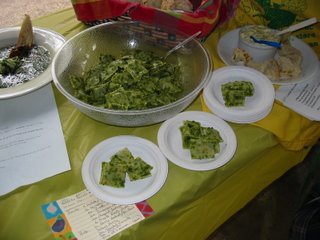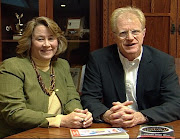
Garlic mustard is an herb with heart-shaped leaves that gives off an odor of garlic when crushed. German immigrants brought the plant to The United States in the early 1800's for it's culinary and medicinal use. Once introduced to an area, garlic mustard takes over and spreads like crazy. It has become a problem in the northeast as native plants are deprived of light, water and space to grow, when garlic mustard moves in. It replaces native plants used as food by local wildlife, and puts stress on the ecological balance, most notibaly wildflowers and butterflies. In Europe, Garlic Mustard is consumed by 69 species of insects, who keep it's growth in check. None of these predators inhabit North America.
Here in The States, Garlic mustard is called "the villain of the valley" because of it's reputation for aggressively monopolizing soil, space, and nutrients. However, several studies have shown that garlic mustard may not be as wicked as claimed. "One study found that areas with garlic mustard had the same species diversity as those without, over a three year period. A second study found that jewelweed, a native plant, out competed garlic mustard."
If you have garlic mustard growing in your area, it is a good idea to do the work that the bugs do in Europe. Keep the plant in check by pulling it out by the roots. You may then eat it, use it as medicine, or put it in the garbage, but remember not to compost pulled weeds. The seeds in the compost will just make the problem worse over time.
There are many medicinal uses for garlic mustard. Ingesting the leaves will induce sweating and treat respiratory problems like asthma and bronchitis. Applied as a poultice, it is effective itching from insect bites and stings.
"The many culinary names of garlic mustard are suggestive of its historic use as a potherb in its native countries. This was particularly true in the winter and the early spring, as there are few other greens available. The leaves of young plants can be eaten raw as a salad or can be cooked as a steamed vegetable, like spinach. It can also be used with other foods to impart a garlic flavor. It has been promoted for its high vitamin A content 8,600 units per 100 grams) and its high vitamin C content (190mg per 100 grams)."
In Maryland, The Friends of the Patapsco Valley and Heritage Greenway hold a Garlic Mustard festival each year, that includes a Garlic Mustard picking contest, a poster contest, and a Garlic Mustard Cook-off.
Here is the prize winning recipe from professional chef Robert Dunn from The Garlic Mustard Cook's Challenge 2003

You know the old saying: When life gives you garlic mustard...Make Pesto!
Garlic Mustard and Spinach Raviolis with Garlic Mustard Pesto
Raviolis:
4 shallots / 1 clove garlic
2 cups spinach
2 cups garlic mustard
4 oz. ricotta cheese
2 oz. Parmesan cheese
2 oz. chopped sundried tomotoes
6 sheets fresh pasta
Saute shallots and garlic in 2 Tbl butter until tender. Add spinach and garlic mustard greens & wilt. Season with salt and pepper. Remove from pan and cool slightly. Squeeze excess liquid from green and chop. Combine all ingredients and season to taste. Cut pasta sheets to desired size. Eggwash pasta and fill with garlic mustard and spinach mixture.
Pesto:
1 cup garlic mustard
½ cup basil
3 cloves garlic
2 oz. toasted pinenuts
4 oz. olive oil
juice of 1 lemon
In food processor combine all ingredients except olive oil. Puree and add olive oil with processor running. Toss cooked raviolis with pesto.
Time required: 1 hr. Serves 10.





























No comments:
Post a Comment